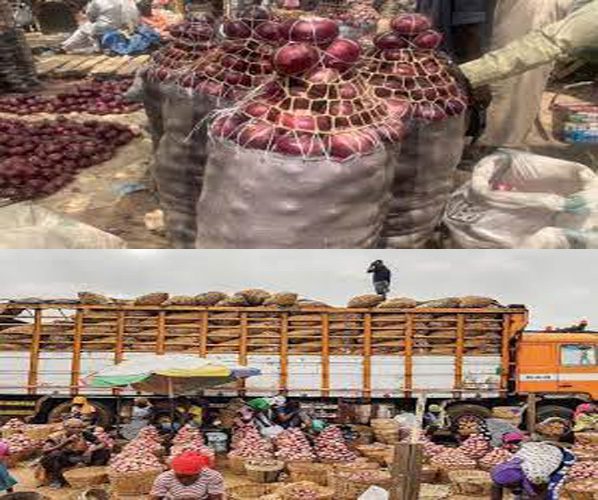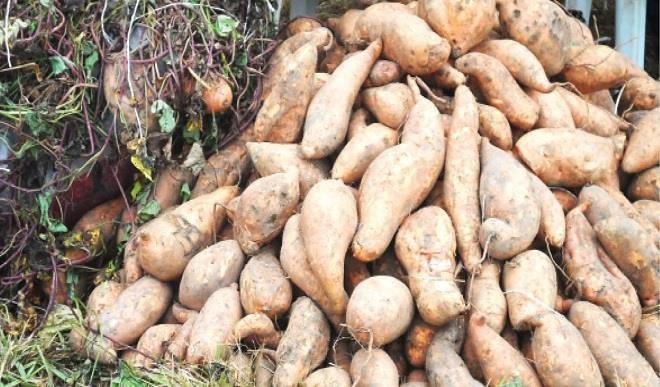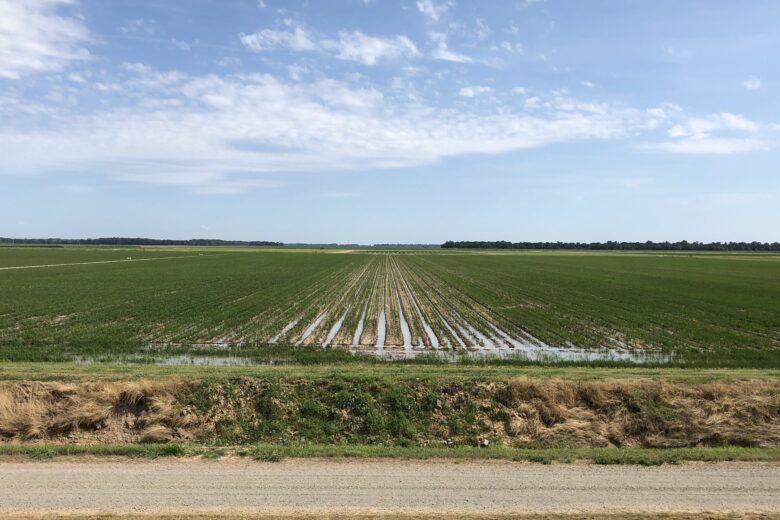How To Start Planting Onions In Ghana- Farming onions in Ghana is one of the most lucrative agro-business to start. This is because the daily consumption of onions is more than the production rate throughout the country’s shore.
Onions are consumed in varieties of ways and can be used for different purposes more reason there is high demand for onions in Ghana and in Africa at large.
To start planting onions in Ghana, all you need is a parcel of land, poultry droppings to act as organic manual, good specie of onions, careful nursery, and planned transplanting.
We will be showing you how you can start planting onions in large and medium quantities here in Ghana and all you need to know about onion cultivation in Africa.
How To Start Planting Onions In Ghana Step By Step Guide
Here are a few pointers to get you started growing onions in Ghana:
Step1: Prepare the soil for planting.
Planting onions in Ghana can be done in a variety of ways. You can either put them in sacks or plant them directly in the farm’s raised beds.
Instead of sacks, we’ll be referring to the farm bed throughout this tutorial.
Read Also: How To Start Goat Farming Business In Ghana [Step BY Step Guide]
Make sure the fields are tidy.
Before you begin anything else, take some time to tidy up your farm. Clean up the farm by removing unwanted vegetation such as weeds, shrubs, roots, and so on.
Gathered them all together and set the grass on fire.
Spraying herbicides
Spray fungicides and herbicides on your cleared field after burning the bushes. To keep weeds under control on your farm for at least three months, you can use systemic selective herbicides.
Erect Bed/low-ridges
Make a place for your onions to lay next.
During the dry season, you need to construct ridges that aren’t too high so that your onions may grow.
Doing this is so that seeds have access to the meager quantity of water they require to germinate and make sure that the beds are kept short and close to the ground.
Adding chicken excrement or manure to the soil
The next stage in preparing the soil for your onions is to apply manure to your beds.
Using the correct amount of fertilizer and using organic fertilizer instead if you don’t have the money for fertilizer is an option.
At least two weeks before you plant, find a chicken in your neighborhood and gather its droppings.
Read Also: How To Start Poultry Business In Ghana [11 Step By Step Guide]
Step 2: Invest in High-Quality Onion Seed.
Once the land and farm have been prepared, it’s time to search for onion seeds. To accomplish this, take these steps:
You will need to buy hybrid onion seeds from the local farm stores.
Take the shavings, which your neighbors call “sawdust,” from a furniture store or a company like Sawmill.
Dried bird droppings are a must-have as well.
When you obtained the wood shavings and bird droppings, you mixed them together with a little water to make it a little moister.
When you’re done, spread this mixture on the nursery path or the seed trough.
Put the mixture on the nursing tray in horizontal lines approximately 2 cm apart and make ridges out of it.
Finally, scatter the hybrid seeds you just purchased at the agro store on this tray and cover them with sand.
Start watering the tray in the morning and at night, but don’t wet the lines where the onions are laid out. ‘
This is due to the fact that onions prefer a small amount of water; only the bottom of your line has to be wet.
For the next ten days, do this. After 10–15 days, most onion seedlings are ready to be planted.
Step 3: Begin to plant.
Start transferring your onions to the farm bed you prepared next.
If you want to harvest your onions while they are still green, you should sow the seedlings 1 cm deep and ensure they do not touch each other on the bed.
Plant it 1 cm deep and at least 2 to 3 inches between each plant and at least 10 to 12 inches between rows if you plan on picking it when it’s dry.
The temperature should be monitored during and after transplanting.
Month Of Onion Planting In Ghana
In Ghana, onions can be cultivated all year round, although they’re commonly planted between February and April in the northern part of the country, between April and July in the central part of the country, and between July and October in the southern portion of the country.
Onion Care: The Essentials
To get the most out of your nursery, keep the temperature between 20 and 25 degrees Celsius. After transplantation, expect a temperature range of 15 to 30 degrees Celsius.
Curing and bulbing are encouraged by higher temperatures.
The best soil for growing onions is dry sand that is not prone to waterlogging over time.
Make sure the farm gets enough water throughout the bulbing phase of onion growth.
Make sure your onion farm isn’t flooded or overrun by water.
To avoid the onion bulb from developing a thick neck and excessive leaves, do not add fresh poultry droppings to the farm bed.
To keep the bed free of weeds, either hand-weed it regularly or use insecticides.
While mulching can help improve soil fertility, it also prevents weeds from obtaining light from the earth below.
To avoid common onion diseases like Fusarium and Sclerotium, be sure to spray your farm with fungicides.
Fumigants such as Milthane, Oshothane, and Dithane are frequently used.
An onion pest such as aphid, whitefly, and whitefly can be controlled by spraying Insecticide.
Price Of A Bag Of Onion In Ghana
A 50kg bag of onions costs approximately GHS 65 in Ghana.
Where Are Onions Grown In Ghana?
Onions are grown nearly everywhere in Ghana. To begin with, it was only grown near Bawku on Bugri, in the Kusasi District of the Upper Region, before spreading throughout the Northern and Upper regions. Nowadays, it’s popular in Ghana’s big cities, where it’s produced more for green onions than bulbs.
Varieties Of Onion In Ghana
The two major onions specie planted in Ghana today are the Bawku Red and Galmi.
How Long Do Onions Take To Grow In Ghana?
Typically, the maturation of onion in Ghana is between three and four months. With a higher temperature, the onion can mature more quickly, but this varies from place to place.
How Do I Know Onions Are Mature For Harvesting?
When you observed the top left has started falling off and is becoming dry.
How Do You Grow Onions In Ghana?
To start planting onions in Ghana, all you need is a parcel of land, poultry droppings to act as organic manual, good specie of onions, careful nursery, and planned transplanting.
Is Onion Farming Profitable In Ghana?
Onions farming is one of the most lucrative farming businesses in Ghana. Onion farming is stress-free, quick to mature for Harvesting, and requires low capital to start up with greater ROI.
Best Time To Plant Onions In Ghana
The best planting season for onions in Ghana is between April and March or July to October.
But usually, you can grow onions round the year if you can manage your farm moisture and temperature.
Conclusion
We have come to the end of this guide on how to start onion farming in Ghana, if there is additional information you sought, you can drop your comment via the comment section, and we will put you through what you needed.





When and how can I grow red buld onion in western North Ghana precisly Sefwi Akontombra .
Thanks for your comment Dominic, the best time to plant red bulb onions in Western North Ghana( Sefwi Akontombra)is December or Early January.
This is because, at this time, the amount of rain fall is mild and onions do well at this weather.
But it is advisable to start farm land preparation ahead of this time.
Do let me know if there’s further questions to help you with.
Hello boss please may I know when to grow Bawku Red onion in Eastern Region (Somanya). Infact I have interest in the business please help me.
Bell peppers are warm-season crops and grow best at temperatures between 18 and 30°C (65–86°F). They can be grown in many soil types although sandy soils warm faster in Spring and are good for early planting. The soil should have a pH between 6 and 7. Peppers will not tolerate water saturated soil and should be planted in a well draining soil or raised bed. Peppers should be planted in an area that receives full sun for most of the day. Sowing seeds In most cases, pepper seeds should be started indoors 8–10 weeks before the last Spring frost. Pepper should only be direct seeded in areas with a long, warm growing season, otherwise seeds should be sown indoors in flats or cell trays using a sterile seedling mix. Plant seeds to a depth of 1.3 cm (1/2 in) and water lightly. Seeds should not be allowed to dry out as there will be a negative impact on germination rates.Trays should be positioned in a warm, bright, South facing window or under fluorescent lighting. The optimum soil temperature for germination is 21–29°C(70–85°F). A heat mat can be used to warm the flats if required. Seedlings will emerge within 8–25 days and after the seedlings has developed two sets of true leaves then they can be moved to a larger (3-4 in) pot. Seedlings should be provided with ample light and adequate fertilizer. Transplanting Peppers are usually transplanted 2–3 weeks after the last frost when the soil temperature has reached a minimum of 15.5°C (60°F). Covering soil with dark plastic or mulch a week prior to planting outdoors can help bring the soil temperature up more quickly in colder regions, allowing earlier planting. Beginning approximately 7–10 days before transplanting, plants should be set outside to harden off. The hardening off process is very important as peppers are very susceptible to transplant shock. The planting site should be prepared by incorporating plenty of organic matter to encourage vegetative growth. When transplanting seedlings, allow 30–45 cm (12–18 in) between plants and 60–76 cm (24–30 in) between rows. Side dress plants with a nitrogen fertilizer at planting. Drip or soaker irrigation is preferred to overhead irrigation and plants should be watered evenly to keep them moist. Mulching around the plants can also help to conserve soil moisture. General care and maintenance Peppers will benefit from applications of fertilizer to keep them supplied with essential nutrients. A timed release fertilizer can be applied at bloom or the plants can be fed with a liquid fertilizer at planting and every two weeks thereafter. In addition, pepper plants can produce a heavy load of fruit and it can be helpful to provide the plants with some support using stakes or cages to prevent branches from breaking under the weight. Use a soft material to tie plants to stakes or cages.